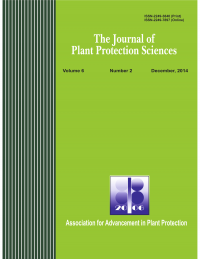Formulation technology: key parameters for food safety with respect to agrochemicals use in crop protection
D.K. Hazra, Megha Pant, S.K. Raza and P. K. Patanjali
ABSTRACT
A very small fraction of all applied pesticides is directly involved in the pesticidal mechanism. This implies that most of the applied pesticides find their way as 'residue' in food chains where they undergo concentration and pro-duce potential, long term, adverse health effects. Pesticides in developing countries in Asia and Pacific region are mainly available as dust, wettable powder, emulsifiable concentrates, solutions, etc. These types of formulations are regarded now as ?conventional‘, ?old technology‘ or ?classical‘ or ?traditional‘ because of their increased in dose rate or repeated applications to get desired bioefficacy which lead to accumulation of pesticide residues in food commodities along with environmental pollution. Conventional formulations, because of their characteristics i.e. dustiness and use of volatile organic solvents in their preparation maximize several problems like health haz-ards and environmental pollution etc. With the increasing awareness of toxic effects of conventional formulations, there is a significant trend towards switching over from such pesticide formulations using petroleum and organic solvent based constituents to user and environment friendly water based formulations. These formulations not only replace toxic, non-degradable ingredients/adjuvants of the conventional formulations but also increase the bio-efficacy of the products through incorporating latest technologies including size reduction (WP to SC, SL to ME), increased coverage of applied surface area (EC to ME/Nano-formulations), reduced wastage (Dust/WP to Con-trolled Release Formulations) and dose rates of same pesticides applied to improve food quality with minimum pesticide residues.
To share on other social networks, click on any share button. What are these?






